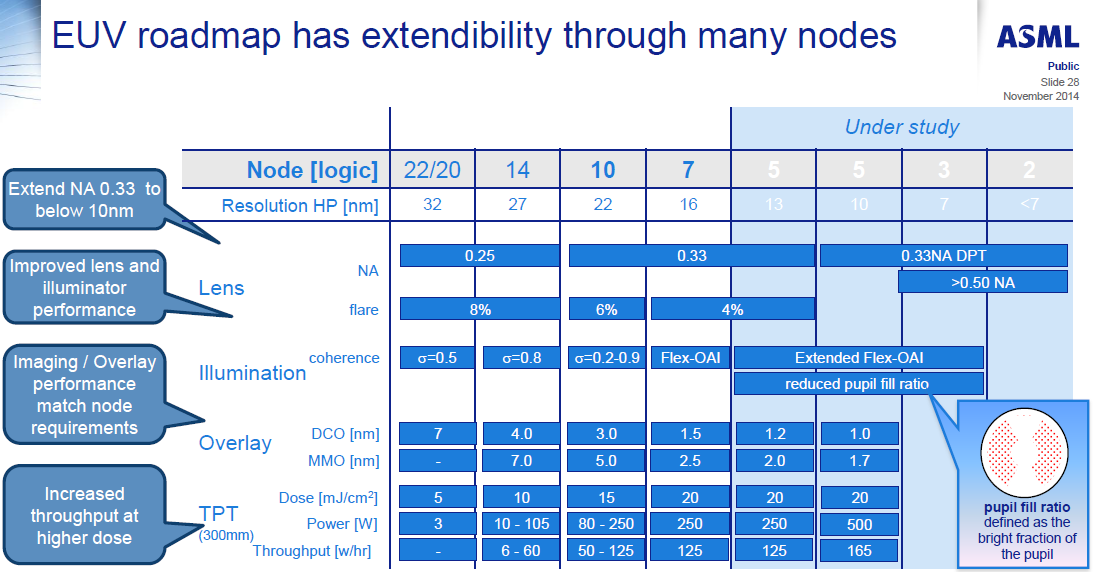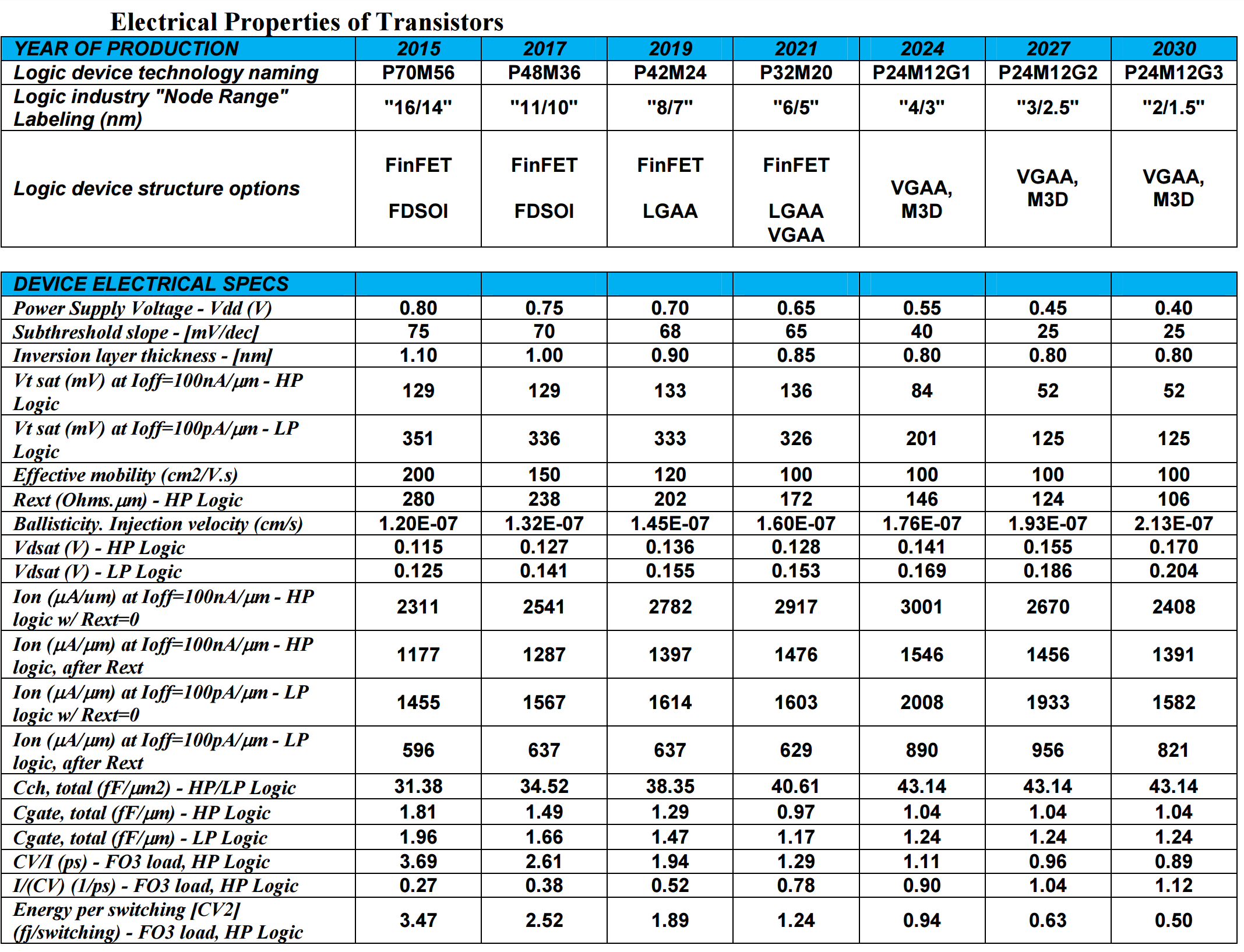Ten Year Anniversary of Core 2 Duo and Conroe: Moore’s Law is Dead, Long Live Moore’s Law
by Ian Cutress on July 27, 2016 10:30 AM EST- Posted in
- CPUs
- Intel
- Core 2 Duo
- Conroe
- ITRS
- Nostalgia
- Time To Upgrade
Looking To The Future: 450mm Wafers in 2021, and Down to ‘2nm’
Most users following the industry will know that the name of the lithographic node, such as ‘14nm’, ‘16nm’ or ‘28nm’ is often an imperfect characterization of what is actually happening on the silicon. For example, Intel’s 14nm node is widely touted as the best in the industry, and the equivalent 14nm/16nm nodes are said to not be even close, due to Intel’s focus on several generations of FinFET compared to the other main semiconductor manufacturers. This also means that while ‘14nm’ or ‘16nm’ is mentioned, many other parts of the silicon could be manufactured on other nodes, depending on the utility.
We’ve spoken in the past about equipment roadmaps to deal with the problem of shrinking lithography node sizes. This includes new lasers, droplet generation, collectors, masks, defect detection, lenses, and the technology to drive high throughput. For example, here are ASML’s EUV requirements for the next few manufacturing nodes, including requirements for 250W light sources at a 5nm node:
With the ITRS report, it makes a couple of metrics regarding node sizes and wafers. On the later, we get the prediction that 450mm wafers should be in play at around 2021 for DRAM:
This matches at DRAM half-pitch of 15nm, or a DRAM cell size of 780nm2, compared to 3480nm2 today. The movement to 450mm wafers has been expected for some time, with early predictions going for the 2008-2011 timeframe, however development seems to have stalled for a variety of reasons.
When it comes to transistors, given the node naming scheme caveats listed above, the ITRS report predicts that FinFET will make way at around the 2021 timeframe in favor of 3D stacking such as ‘vertical gate all-around’ (VGAA). As the node shrinks, as well as the transistor size, the power supply voltage will drop from 800mV today down to 400/450mV by 2027.
Moving into a world of IoT will require even lower power transistors, of which moving to a ‘smaller node’ and vertical chip integration will be a large part.
The ITRS report goes into a lot of detail regarding different stacking technologies, such as the 2.5D integration we see on products like AMD’s Fiji GPU involving a silicon interposer, as well as 3D and the different ways to implement both microchannel cooling in such chips as well as 3D TSV applications.













158 Comments
View All Comments
Dobson123 - Wednesday, July 27, 2016 - link
I'm getting old.3ogdy - Wednesday, July 27, 2016 - link
That's what I thought about when I read "TEN year anniversary". It certainly doesn't feel like it was yesterday...but it certainly feels as old as "last month" is in my mind and that's mostly thanks to i7s, FXs, IPS, SSDs and some other things that proved to be more or less of a landmark in tech history.close - Thursday, July 28, 2016 - link
I just realized I have an old HP desktop with a C2D E6400 that will turn 10 in a few months and it's still humming along nicely every day. It ran XP until this May when I switched it to Win10 (and a brand new SSD). The kind of performance it offers in day to day work even to this day amazes me and sometimes it even makes me wonder why people with very basic workloads would buy more expensive stuff than this.junky77 - Thursday, July 28, 2016 - link
marketing, misinformation, lies and the need to feel secure and have something "better"Solandri - Friday, July 29, 2016 - link
How do you think those of us old enough to remember the 6800 and 8088 feel?JimmiG - Sunday, July 31, 2016 - link
Well my first computer had a 6510 running at 1 MHz.Funnily enough, I never owned a Core 2 CPU. I had an AM2+ motherboard and I went the route of the Athlon X2, Phenom and then Phenom II before finally switching to Intel with a Haswell i7.
Core 2 really changed the CPU landscape. For the first time in several years, Intel firmly beat AMD in efficiency and raw performance, something AMD has still not recovered from.
oynaz - Friday, August 19, 2016 - link
We miss or C64s and AmigasArtShapiro - Tuesday, August 23, 2016 - link
What about those of us who encountered vacuum tube computers?AndrewJacksonZA - Wednesday, July 27, 2016 - link
I'm still using my E6750... :-)just4U - Thursday, July 28, 2016 - link
I just retired my dads E6750. It was actually still trucking along in a Asus Nvidia board that I had figured would be dodgy because the huge aluminum heatsink on the chipset was just nasty.. Made the whole system a heatscore. Damned if that thing didn't last right into 2016. Surprised the hell out of me.